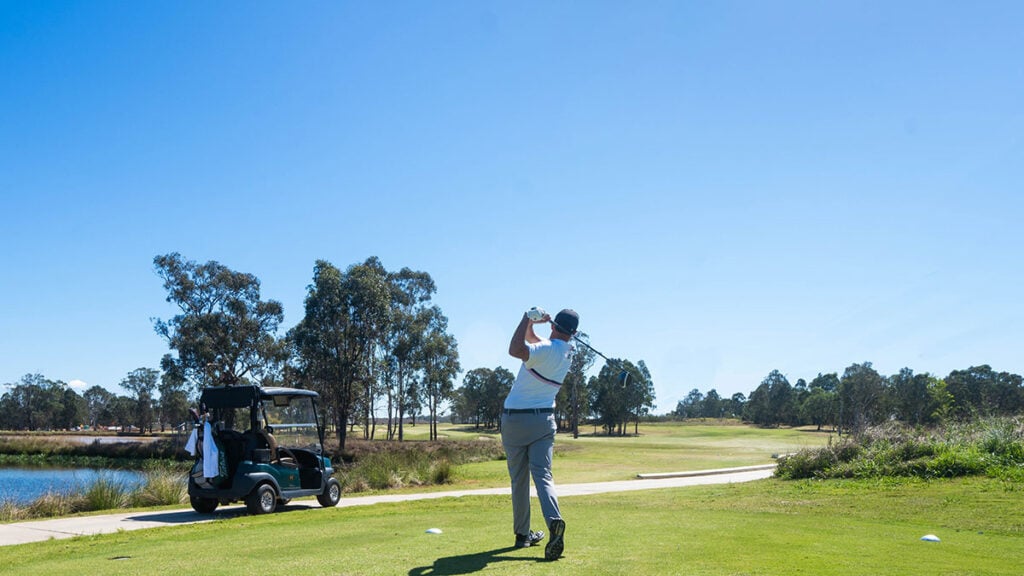Picture Perfect: What you can learn from Peter Thomson’s model swing, an action that stood the test of time.
For more than 60 years, English club professional John Jacobs taught more golfers than perhaps any instructor who has ever lived. Some may remember the charismatic Yorkshireman for playing in 14 Open Championships and winning his singles match at the 1955 Ryder Cup over then-Masters champion Cary Middlecoff.
Over the decades Jacobs ‘had a look’ at, among many others, Peter Thomson, Gary Player, Jack Nicklaus, Tom Watson, Nick Faldo, Seve Ballesteros, Jose Maria Olazabal and Ernie Els. It’s some client list. But it’s what he said about Thomson that struck a chord with many.
“I don’t think there was ever a golfer who managed his game better than Peter Thomson,” Jacobs said. “He had a low ball flight because he trapped everything, which made it difficult for him to properly flight the driver. But he didn’t change, because he knew he had the perfect swing for 13 clubs. As well as the perfect temperament.”
I can’t say how honoured I am to be given the opportunity to add a chapter to Jacobs’ analysis of one of the most natural golf swings the game has seen. Mr Peter Thomson’s golf swing was iconic – built on free-flowing movements that would never break down. This was due, in part, to having a sound setup and an athletic sequence of his body and arms.
He won not only in Australia but all over the world and with five Open Championships, I regard Peter Thomson to be our greatest player of all time. He has left a lasting legacy for all Australian PGA professionals like myself.
Here’s what all golfers of all abilities can learn from a model golf swing that stood the test of time.

Address
Thomson’s setup with the driver is picture perfect. He starts with a solid stance at shoulder width, hands level and a natural spine tilt. It is a powerful setup.

Takeaway
Thomson allows the left side to move away with a beautiful one-piece takeaway to hip height. This is what great players do, moving the club and body in the correct sequence. If you like to drive the ball well, this is the move you are looking for.
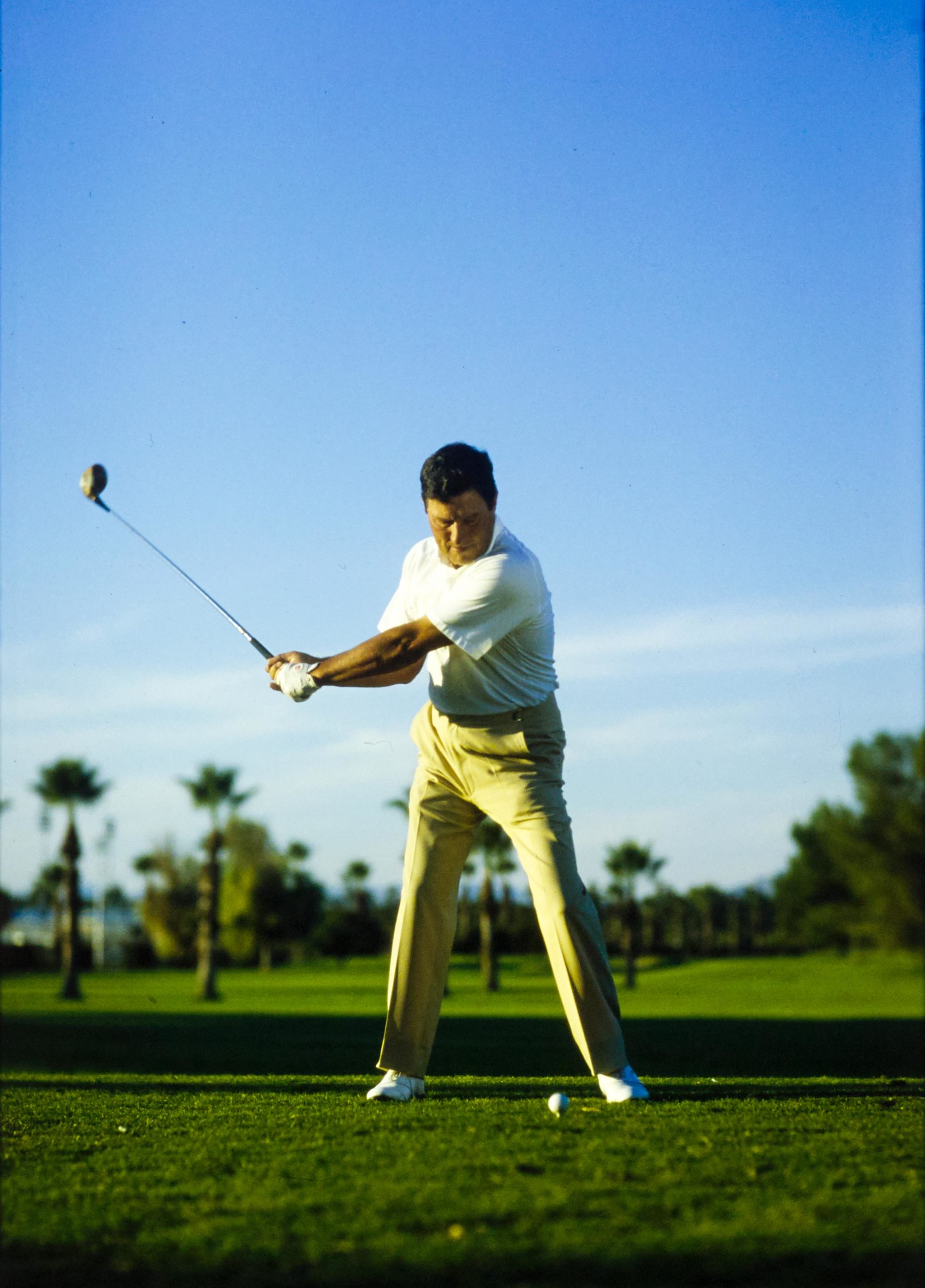
Turn
Three quarters of the way back, Thomson loads the club and body into a solid, braced right leg. This is a powerful position and the key to maximising energy transfer.
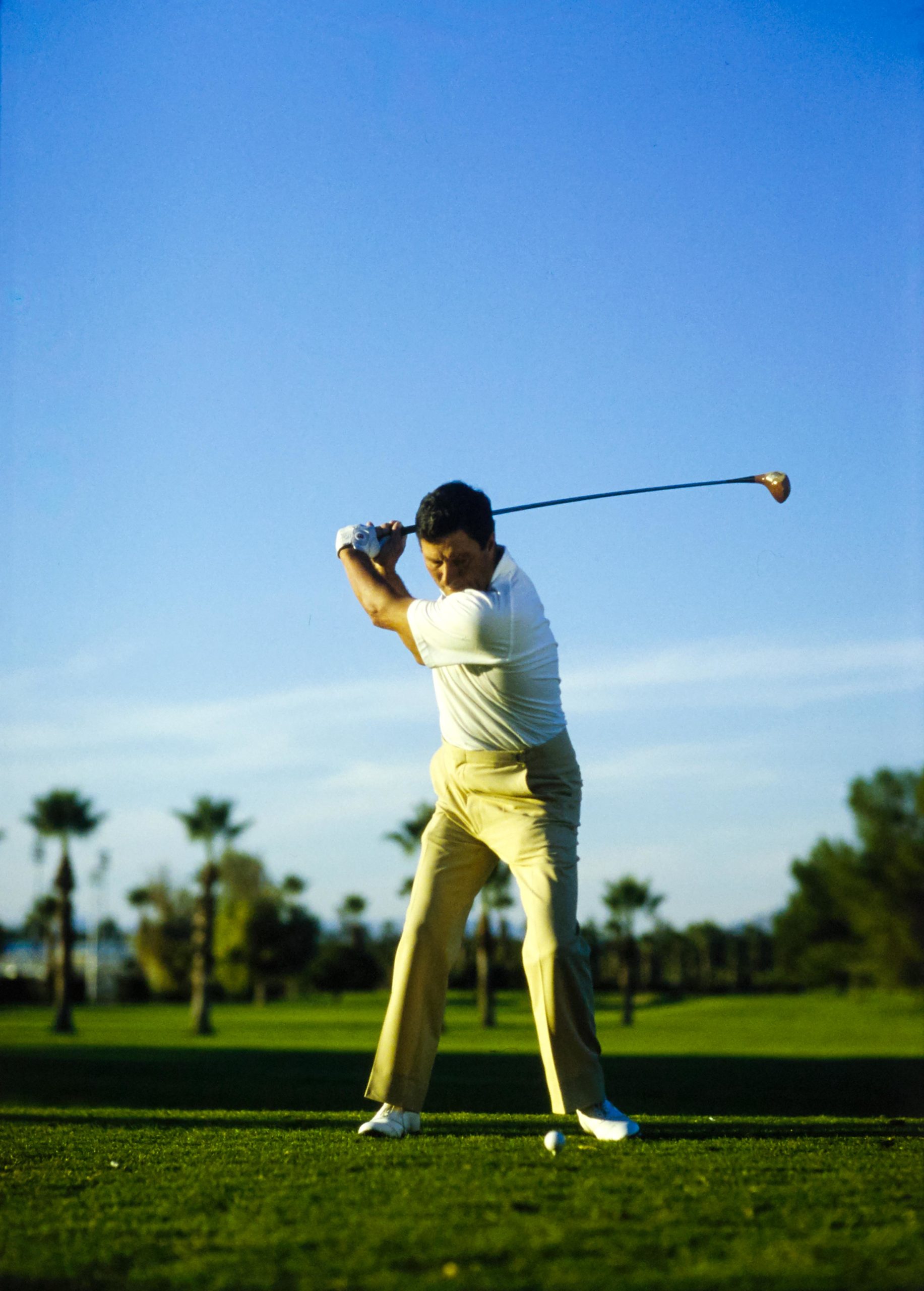
At the top
At the top of the backswing, look how Thomson is loaded into his right side. With his core and chest in this position, he is able to start his downswing from the ground up.
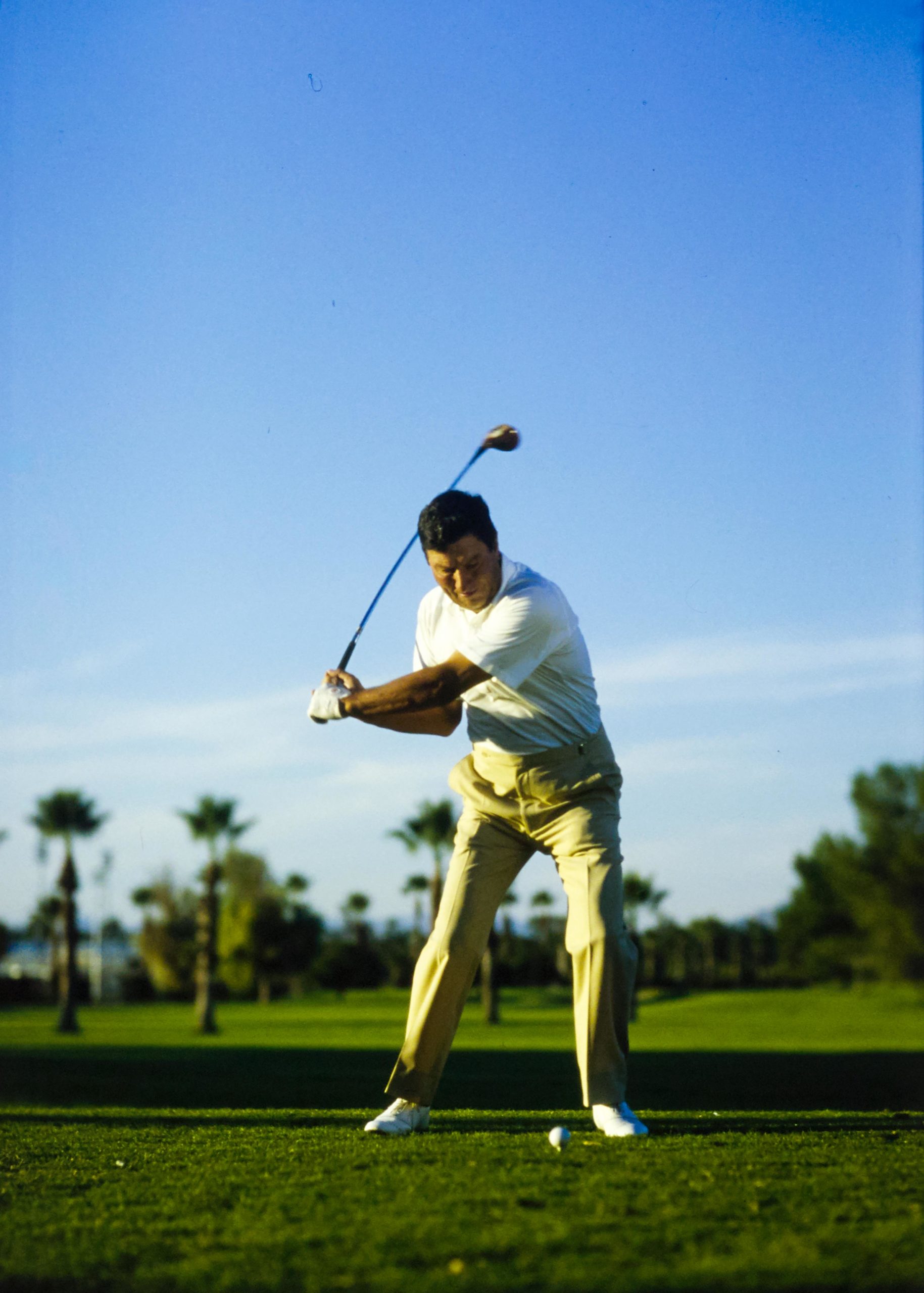
Downswing
I love this position as Thomson shifts his left side back to the original starting point. This pressure shift from his right heel into the ball of his left foot results in the club having a more in-to-out swing direction. This allows him to maintain his left arm and shaft position and is why he was able to play any shape of shot he desired.

Impact
This is the ultimate impact alignment with the left arm and shaft ahead of the clubhead, with great body alignments to match this position. You can’t look at this picture enough!
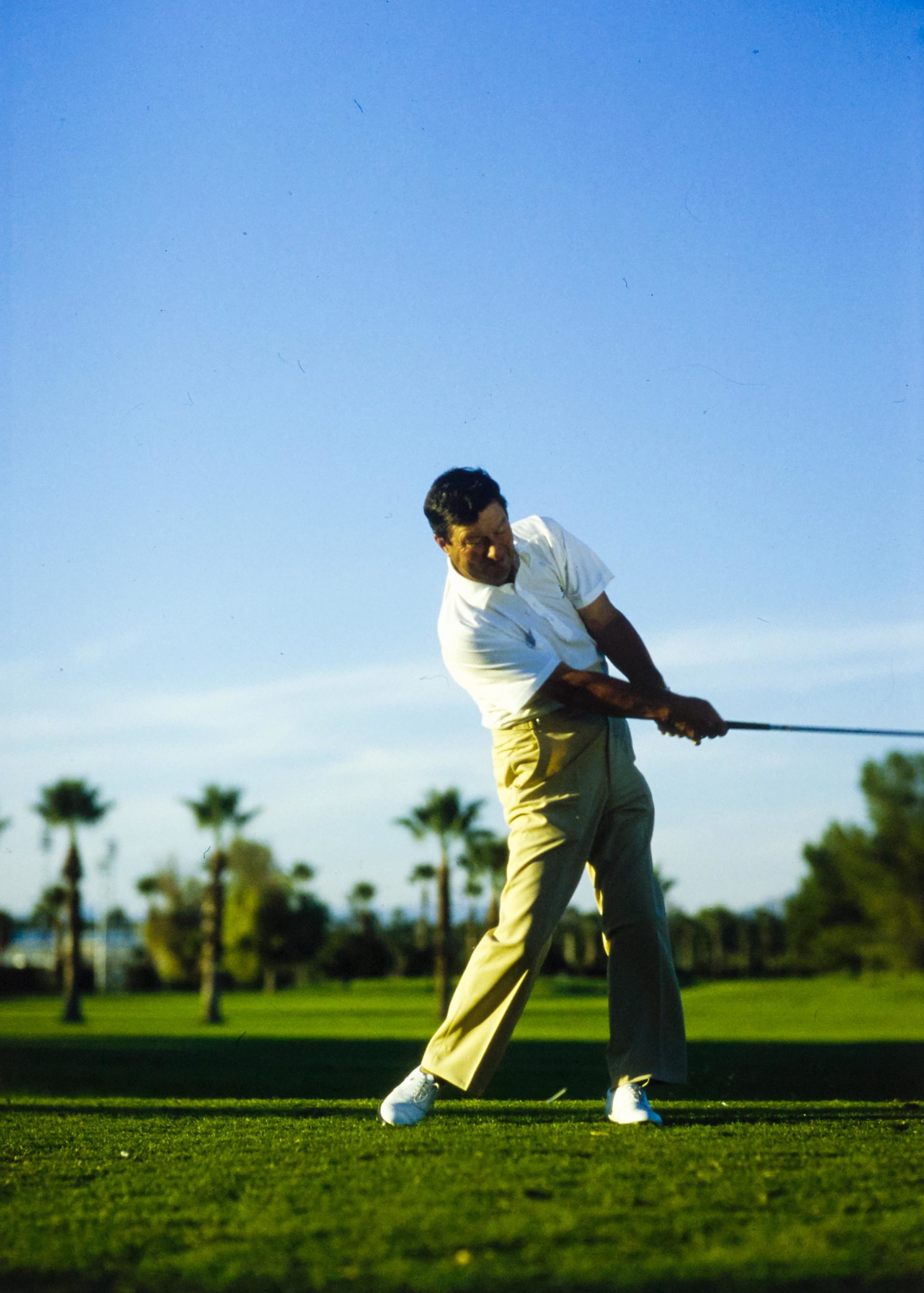
Follow through
No surprises here… a great post-impact position with terrific arm extension and correct shift and rotation of the body. Every movement Thomson makes is orthodox to the highest degree.
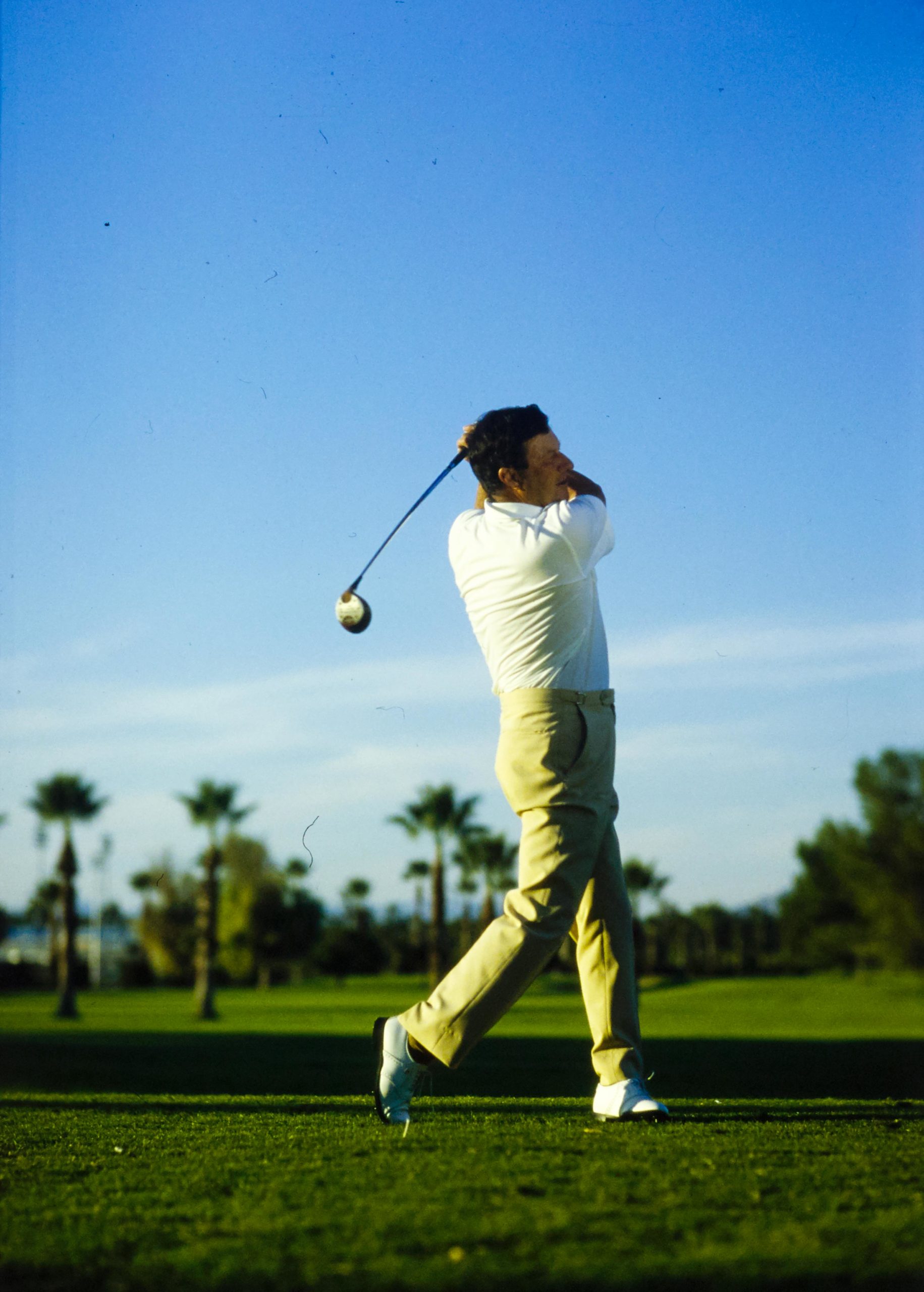
Finish
A beautiful posted-up finish position to complete a picture-perfect swing. A classic example of a model golf swing and one of the most natural swings I have ever seen. Copy these moves and you simply can’t go wrong.


